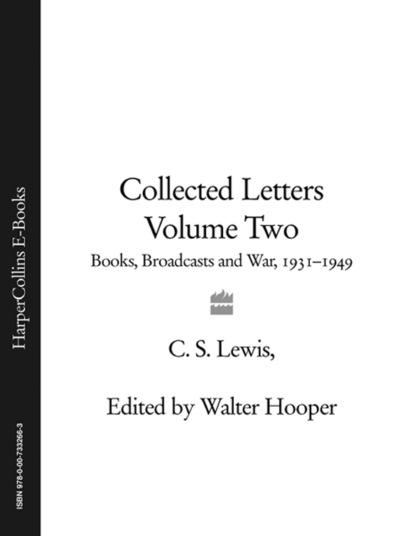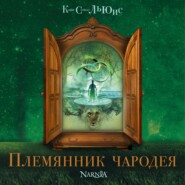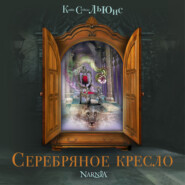По всем вопросам обращайтесь на: info@litportal.ru
(©) 2003-2025.
✖
Collected Letters Volume Two: Books, Broadcasts and War, 1931–1949
Настройки чтения
Размер шрифта
Высота строк
Поля
21 (#ulink_7e8f8451-247d-5a7a-85ca-6596c3029507) In the third of his Meditations on First Philosophy Descartes’s argument for the existence of God runs: ‘I have the idea of a perfect being. Whatever caused this idea must have all the perfections that are represented in the idea.’
22 (#ulink_7e8f8451-247d-5a7a-85ca-6596c3029507) By the ‘Thistle-Bird’ Lewis probably meant the Rev. Henry Edward Bird who, after serving in various London parishes, was Vicar of St Andrew’s, Headington, 1924–46. He sometimes preached at Holy Trinity, Headington Quarry.
23 (#ulink_7e8f8451-247d-5a7a-85ca-6596c3029507) Rudyard Kipling, The Seven Seas (1896), ‘McAndrew’s Hymn’, slightly misquoted.
24 (#ulink_8aa9d783-b700-5209-9e5b-15b1b5bce588) ‘The Land East of the Sun and West of the Moon’ is a story in William Morris, The Earthly Paradise (1868–70).
25 (#ulink_1ed55c17-6c1a-5eb1-b154-b1d64519e387) One of Jack and Warnie’s nicknames for each other. When they were small children their nurse sometimes threatened to smack their ‘pigieboties’ or ‘piggiebottoms’. Over time the brothers decided that Warnie was ‘Archpiggiebotham’ or ‘APB’ and Jack ‘Smallpiggiebotham’ or ‘SPB’, and thereafter they frequently addressed each other by these names or variations of them. In his letter to Warnie of 2 August 1928 (CL I, p. 768), Jack discusses the nature of ‘pigiebotism’—the manners and ideas of young men like Warnie and Jack.
26 (#ulink_e84b5f80-7dce-539c-af37-d09c9f22ba0e) Ephesians 6:13.
27 (#ulink_1be8406f-38ba-5eba-afb8-b875068d7f67) 18 October.
28 (#ulink_1be8406f-38ba-5eba-afb8-b875068d7f67) John is the ‘mystical’ fourth Gospel. The other three Gospels—Matthew, Mark and Luke—are remarkably similar in workings and structure; scholars call these three Gospels synoptic (from the Greek for ‘seeing together or at the same time’, a name derived from the practice of tabulating their similarities in parallel columns for comparison). It is generally believed that Mark was used as a source by Matthew and Luke.
29 (#ulink_31b79e48-b512-5f23-8593-1c4fd0816a76) The English School was divided between those who upheld the primacy of the study of English literature and those advocating the importance of language. Lewis had complained when Professor J. R. R. Tolkien wanted more linguistic courses, these to be based on Old or Middle English literature, but by 1931 he had come to see the merit of Tolkien’s proposals and thereafter gave him his full support. Soon the curriculum of the English School required that students learn the English language of all periods, while the literature syllabus began with Beowulf and ended with the Romantics in 1830. There were murmurings of dissent from the other side about the monopoly of philology and the absence from the curriculum of any modern literary criticism.
30 (#ulink_2a412689-2afd-55ff-ac5c-6a3d1cf19c40) Miss Kathleen Whitty had been Maureen’s music teacher when the Moores lived in Bristol, and she often visited them in Oxford.
31 (#ulink_2a412689-2afd-55ff-ac5c-6a3d1cf19c40) Ramsay MacDonald (1866–1937), Labour Prime Minister, 1924, 1929–35.
32 (#ulink_2a412689-2afd-55ff-ac5c-6a3d1cf19c40) Philip, Viscount Snowden (1864–1937), Chancellor of the Exchequer, 1924, 1929–31.
33 (#ulink_26dfd916-92e0-5d5e-b726-5f0d70348caf) Jane Austen, Northanger Abbey (1818).
34 (#ulink_440a1541-33be-5157-8ab7-e2ae08188a29) See Owen Barfield (1898–1997) in the Biographical Appendix to CL I. Barfield, one of Lewis’s closest friends, joined the family law firm in London, Barfield and Barfield, in 1929. After taking a degree of Bachelor of Civil Law from Oxford in 1930, he began preparing for law exams in London. During his many years with Barfield and Barfield he acted as Lewis’s solicitor.
35 (#ulink_4af10e1b-5382-5fb5-9dbb-584622823019) Lewis had been given a pair of swans by the Provost of Worcester College. See Fred W. Paxford, ‘He Should Have Been a Parson’ in We Remember C.S. Lewis, ed. David Graham (2001), p. 122.
36 (#ulink_4344ab48-c8df-58cb-bf69-75fa407adad7) John Keats, Endymion (1818).
37 (#ulink_4344ab48-c8df-58cb-bf69-75fa407adad7) John Keats, Hyperion (1820).
38 (#ulink_36c8d4a3-4faa-5340-81bd-e0d46a127e41) ‘It’ was Lewis’s original name for the inconsolable longing he called ‘Joy’ in SBJ.
39 (#ulink_291158e9-2f65-5308-b367-7c38046c2544) This, one of Plato’s dialogues, is about Persuasion and Eros and their part in our perception of the eternal Forms.
40 (#ulink_291158e9-2f65-5308-b367-7c38046c2544) Arthur’s friend, the novelist Forrest Reid (1875–1947), was living in Belfast at this time. Reid told his story in two autobiographies, Apostate (1926) and Private Road (1940). His novel, Uncle Stephen, was published in October 1931.
41 (#ulink_34c9aa1d-eb5f-5b0e-ac0d-d4f9b61fe16d) Luke 9:24.
42 (#ulink_842f2e52-5113-5dff-a8c2-ec4cdaa32acf)The Times Literary Supplement (29 October 1931), p. 838.
43 (#ulink_1f3f4798-4712-5226-ac14-3e016bbc3c30)BF, p. 89.
44 (#ulink_a38a5530-8250-50d5-a583-1031c4de8fb9) Before he left for Gibraltar Warnie had begun editing the enormous number of family diaries, letters and other memorabilia amassed by Albert Lewis. When he finished in 1933, the ‘Memoirs of the Lewis Family: 1850–1930’ consisted of eleven volumes of papers with numerous notes by the Lewis brothers. The original of the unpublished ‘Lewis Papers’, as the ‘Memoirs’ are known, is in the Marion E. Wade Center, Wheaton College, Wheaton, Illinois, with microfilm in the Bodleian Library, Oxford, and the Southern Historical Collection, the University of North Carolina at Chapel Hill.
45 (#ulink_fc74ff3a-1f9e-509a-b3b6-a948a2c0cca1) This was the favourite walk of the essayist and poet Joseph Addison (1672–1719). When a Fellow of Magdalen he lived in New Buildings and greatly enjoyed the walk which runs northward from the college buildings. Since the nineteenth century it has been known as ‘Addison’s Walk’. On the centenary of Lewis’s birth In 1998 a memorial stone was placed along the walk inscribed with Lewis’s poem ‘What the Bird Said Early in the Year’ in which he mentions Addison’s Walk.
46 (#ulink_fc74ff3a-1f9e-509a-b3b6-a948a2c0cca1) See Adam Fox in the Biographical Appendix.
47 (#ulink_fc74ff3a-1f9e-509a-b3b6-a948a2c0cca1) Paul Victor Mendelssohn Benecke (1868–1944), great-grandson of the composer Felix Mendelssohn, was Classics Tutor at Magdalen College, 1893–1925. He was Lewis’s history tutor when he was an undergraduate at University College. See Lewis’s letter to Albert Lewis of 21 January 1921.
48 (#ulink_fc74ff3a-1f9e-509a-b3b6-a948a2c0cca1) John Alexander Smith (1893–1939), philosopher and classical scholar, was Waynflete Professor of Moral and Metaphysical Philosophy and Fellow of Magdalen, 1910–36. Born at Dingwall in Cromarty, he came up to Balliol College from Edinburgh University in 1884. After taking a First in Classics in 1887 he was Fellow in Philosophy at Balliol, 1891–1910, before moving to Magdalen. A distinguished scholar of Aristotle, for many years he exercised great influence in the Oxford Aristotelian Society. His translation of De Anima appeared in 1931. He maintained the Idealist tradition of T. H. Green and Edward Caird. A chapter is devoted to him in James Patrick, The Magdalen Metaphysicals: Idealism and Orthodoxy at Oxford, 1901–1945 (Macon, Georgia: Mercer University Press, 1985).
49 (#ulink_fc74ff3a-1f9e-509a-b3b6-a948a2c0cca1) Frederick David Lyddiatt, who lived at 52 Wharton Road, Headington, helped out at The Kilns, sometimes acting as chauffeur.
50 (#ulink_f7caa4a5-51f5-5c0f-9716-832a3005e160) Chesney Horwood (1904–90) came up to Oxford in 1922 as an exhibitioner of the Non-Collegiate Society. After graduating he spent two years as Lektor in English Literature at the University of Freiburg-im-Breisgau. On returning to Oxford in 1928 he became Fellow of English and Dean at the Non-Collegiate Society which in 1930 was refounded as St Catherine’s Society, and which in 1962 became St Catherine’s College. Apart from 1940–6, when he served in the Intelligence Service, Horwood spent his entire working life in the service of the society.
51 (#ulink_54180856-2839-5625-ae85-ebbdbe5a01e8) See J. R. R. Tolkien (1892–1973) in the Biographical Appendix to CL I. Tolkien and Lewis were just beginning their regular meetings which led to the founding of the Inklings.
52 (#ulink_2d15e3d0-73be-50fa-a79f-a940434a78f1) See Henry Victor Dyson ‘Hugo’ Dyson (1896–1975) in the Biographical Appendix to CL I. He was a lecturer and tutor in English in the University of Reading, 1921–45, and Fellow and Tutor in English at Merton College, Oxford, 1945–63.
53 (#ulink_2d15e3d0-73be-50fa-a79f-a940434a78f1) R. W. Chapman, The Portrait of a Scholar & Other Essays Written in Macedonia, 1916–1918 (1922).
54 (#ulink_d843b01f-071d-5d06-b856-26757293239b) David Lindsay Keir (1895–1973) was a Fellow of New College, Oxford, 1921–39, President and Vice-Chancellor of Queen’s College, Belfast, 1939–49, and Master of Balliol College, 1949–65.
55 (#ulink_d843b01f-071d-5d06-b856-26757293239b) Frederick Henry Lawson (1897–1983) was Fellow and Tutor in Law at Merton College, Oxford, 1930–48, and Professor of Comparative Law and a Fellow of Brasenose College, 1948–64.
56 (#ulink_7f882197-b14f-56f7-8251-422b283e96fd) The Barley Mow pub at Blewbury, Oxfordshire.
57 (#ulink_c4b92364-1355-5539-bd5f-1ed00b3e8780) J. W. A. Condlin was Albert Lewis’s managing clerk from 1917 until Albert’s death in 1929.
58 (#ulink_656069b9-f907-5e49-a78c-b3ed3f572d90) ‘The Tower of Glass’ was the Rev. Ernest William Carlisle Hayes (1896–1950). Hayes took his BA from Sidney Sussex College, Cambridge, in 1889, and was ordained in the Church of Ireland in 1893. After serving in a number of parishes, he was Rector of St Mark’s, Dundela, 1925–35. The Lewis brothers gave him this nickname after the firm of stained-glass artists (see note 60) because he was in charge of installing the window dedicated to their parents.
59 (#ulink_656069b9-f907-5e49-a78c-b3ed3f572d90) The Rev. Claude Lionel Chavasse (1897–1983), of an Anglo-Irish family, took his BA from Exeter College, Oxford, in 1922. He was trained at St Stephen’s House, Oxford, and ordained in the Church of Ireland in 1929. He was Curate of St Mark’s, Dundela, 1928–31, after which he served in a number of parishes in County Cork. He was Vicar of Kidlington, Oxfordshire, 1947–57.
60 (#ulink_656069b9-f907-5e49-a78c-b3ed3f572d90) Jack and Warnie planned to give a stained-glass window to St Mark’s in honour of their parents. The window, erected in 1935, was designed by Michael Healy (1873–1941). He was a member of The Tower of Glass, a group of stained-glass window artists of the time. For information about the window see David Bleakley, C. S. Lewis—At Home in Ireland (Belfast: Strandtown Press, 1998), pp. 182–3.
61 (#ulink_b1ef2db9-c5fe-549c-847c-8a33bb186bd4) John Knox, The First Blast of the Trumpet Against the Monstrous Regiment of Women (1558).
62 (#ulink_b1ef2db9-c5fe-549c-847c-8a33bb186bd4) Mary Elizabeth ‘Lily’ Ewart (1888–1976) was the sister of Arthur Greeves, and the wife of Charles Gordon Ewart (1885–1936).
63 (#ulink_b1ef2db9-c5fe-549c-847c-8a33bb186bd4) John Milton, Paradise Lost (1667), V, 384–5: ‘no though! infirm/Altered her cheek’
64 (#ulink_a62532b8-6a97-53e6-b582-d00ec96b9849) Thomas Carlyle, Past and Present (1843).
65 (#ulink_a62532b8-6a97-53e6-b582-d00ec96b9849) ‘Leeborough’ or ‘Leeboro’ was Jack and Warnie’s private name for their family home, Little Lea. A ‘Leeborough edition’ is a book from Little Lea.
66 (#ulink_a62532b8-6a97-53e6-b582-d00ec96b9849) Since they were boys Jack and Warnie had been amused by their father’s ‘low’ Irish pronunciation of ‘potatoes’ as ‘p’daytas’. As a result, Mr Lewis was nicknamed ‘The P’dayta’ or ‘The P’daytabird’. The term came to be applied to anyone displaying the characteristics of their father, in particular an ignorant dogmatism. Jack eventually discovered this characteristic in himself: ‘I’m afraid I must be a P’dayta,’ he wrote to Warnie on 2 August 1928, ‘for I made a P’daytism the other day: I began talking about the world and how it was well explored by now and, said I “We know there are no undiscovered islands.” It was left for Maureen to point out the absurdity’ (CI I, p. 777).
67 (#ulink_bb1a6c69-7eec-591d-8eaf-8763329eddc5) The Rev, Alured George Clarke was Vicar of All Saints, Highfield, Oxford, 1920–35.
68 (#ulink_cffba674-f2c3-5e72-a3d5-75b38f2f1ce6) William Cowper, Poetry & Prose, With Essays by Hazlitt & Bagehot. introduction and notes by Humphrey S. Milford (Oxford: Clarendon Press, 1921),
69 (#ulink_22542abf-874f-53d0-9020-ef8a0a908e9d) George MacDonald, Phantastes: A Faerie Romance (1858).
70 (#ulink_a955aa2c-6c35-5ae7-a3f6-41f94d242502) Mr (later Sir) Frederick Lucius O’Brien (1896–1974), a Quaker, was Arthur’s cousin on his mother’s side. During his life he held many civil and governmental positions in Belfast. He and Arthur often travelled together.

















